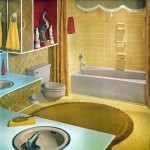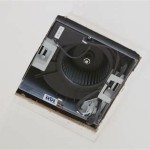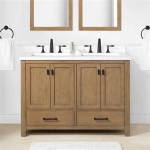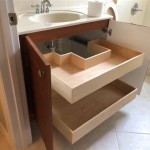Understanding Bathroom Sink Drain Parts: A Diagram-Based Guide
Bathroom sink drains, while seemingly simple, consist of several interconnected parts that work together seamlessly to facilitate water drainage. Understanding the components of a bathroom sink drain is crucial for homeowners to troubleshoot common issues, perform preventative maintenance, and even carry out minor repairs. This article will provide a comprehensive overview of the parts that make up a typical bathroom sink drain, utilizing a diagram to visualize their arrangement and function.
Key Drain Parts and Their Functions
A standard bathroom sink drain typically comprises the following components:
1. Drain Strainer:
The drain strainer, often made of metal or plastic, is the visible component positioned directly over the sink's drain hole. Its purpose is to catch hair, debris, and other small objects that could obstruct the drain. It usually features a removable cover for easy cleaning.
2. Tailpiece:
The tailpiece, a short, vertical pipe, connects the drain strainer to the drainpipe. It can be made of metal or plastic and typically has a threaded end for attaching to the strainer and a slip-joint or threaded connection for attaching to the drainpipe.
3. Drainpipe:
The drainpipe, also known as the waste pipe, is the primary conduit that carries wastewater away from the sink. It is usually made of PVC, ABS, or metal and connects to the tailpiece, leading to the main drain system. The drainpipe's diameter varies depending on the sink's size and flow rate.
4. P-Trap:
The P-trap is a U-shaped pipe section that prevents sewer gases from entering the home through the drain. It is typically made of PVC or ABS and is positioned below the tailpiece, forming a water seal within the curve. The water in the P-trap acts as a barrier, preventing unpleasant odors from rising up the drain.
5. Overflow Tube:
The overflow tube, often made of metal, extends from the sink's bowl to the drainpipe. It is designed to prevent water from overflowing the sink should the drain become blocked or the faucet is left running unattended. The overflow tube connects to the drainpipe above the P-trap, ensuring water can escape the sink even if the main drain is obstructed.Visualizing the Bathroom Sink Drain: A Diagram
To further illustrate the arrangement and connections of these parts, a diagram can be incredibly helpful. Imagine a simple bathroom sink drain as follows:
1.
Top:
The drain strainer sits atop the sink's drain hole. 2.Below:
The tailpiece connects to the drain strainer and descends vertically. 3.Further Down:
The drainpipe extends from the tailpiece, moving horizontally or downwards, depending on the plumbing configuration. 4.Curved Section:
The P-trap, shaped like a U, is positioned below the tailpiece, forming a water seal within the bend. 5.Overflow Connection:
The overflow tube, which runs from the sink's bowl, connects to the drainpipe above the P-trap, creating a secondary drainage pathway.Common Bathroom Sink Drain Problems and Their Solutions
Understanding the parts of a bathroom sink drain aids in identifying and addressing common issues that may arise. Some common problems include:
1. Slow Drainage:
Slow drainage is often caused by clogs within the drainpipe or P-trap. This can be addressed by using a plunger or drain snake to dislodge the obstruction.
2. Leaking Tailpiece:
A leaking tailpiece indicates a loose connection or a faulty seal. Tightening the connection or replacing the gasket can resolve the issue.
3. Overflowing Sink:
An overflowing sink may indicate a clogged overflow tube or a blocked drainpipe. Removing debris from the overflow tube or using a drain snake to clear the drainpipe can remedy the problem.
4. Persistent Odors:
Unpleasant odors emanating from the drain are typically caused by a dry P-trap. Adding water to the P-trap should eliminate the odor. If the odor persists, the P-trap might be damaged or the plumbing vent might be obstructed, requiring professional inspection and repairs.
Bathroom Sink Plumbing Diagram Diy Sinks Drain

Bathroom Sink Pop Up Stopper Parts Diagram Drain Plug

Bathroom Sink Parts Diagram Plumbing Drain

Kitchen Sink Drain Parts Diagram Decorating Ideas On A Budget Check More At Http Www Entrop Bathroom Plumbing

Bathroom Sink Plumbing Diagram Drain

How To Repair An Old Clawfoot Tub Overflow Gasket Types Explained Diagram Image Search Results In 2024 Bathtub Drain Shower Plumbing

How To Fit A Bathroom Sink Diy Guides Victorian Plumbing

Plumbing Repairs How To Repair Fix It Diy Installation

Bathroom Sink Drain Parts Diagram Http Www Designbabylon Interiors Com Check More At Inte

What Are The Parts Of A Sink With Detailed Diagram Upgradedhome Com
Related Posts







